
Deutsch-Chinesische Enzyklopädie, 德汉百科
 Egypt
Egypt
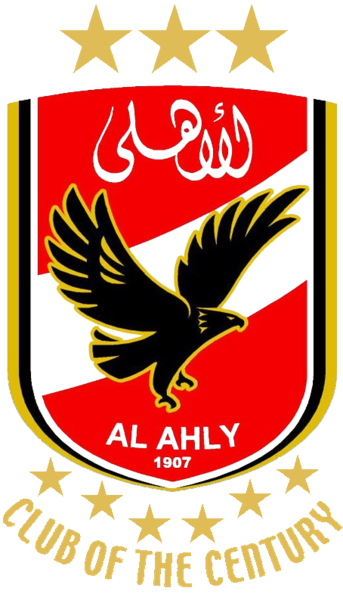












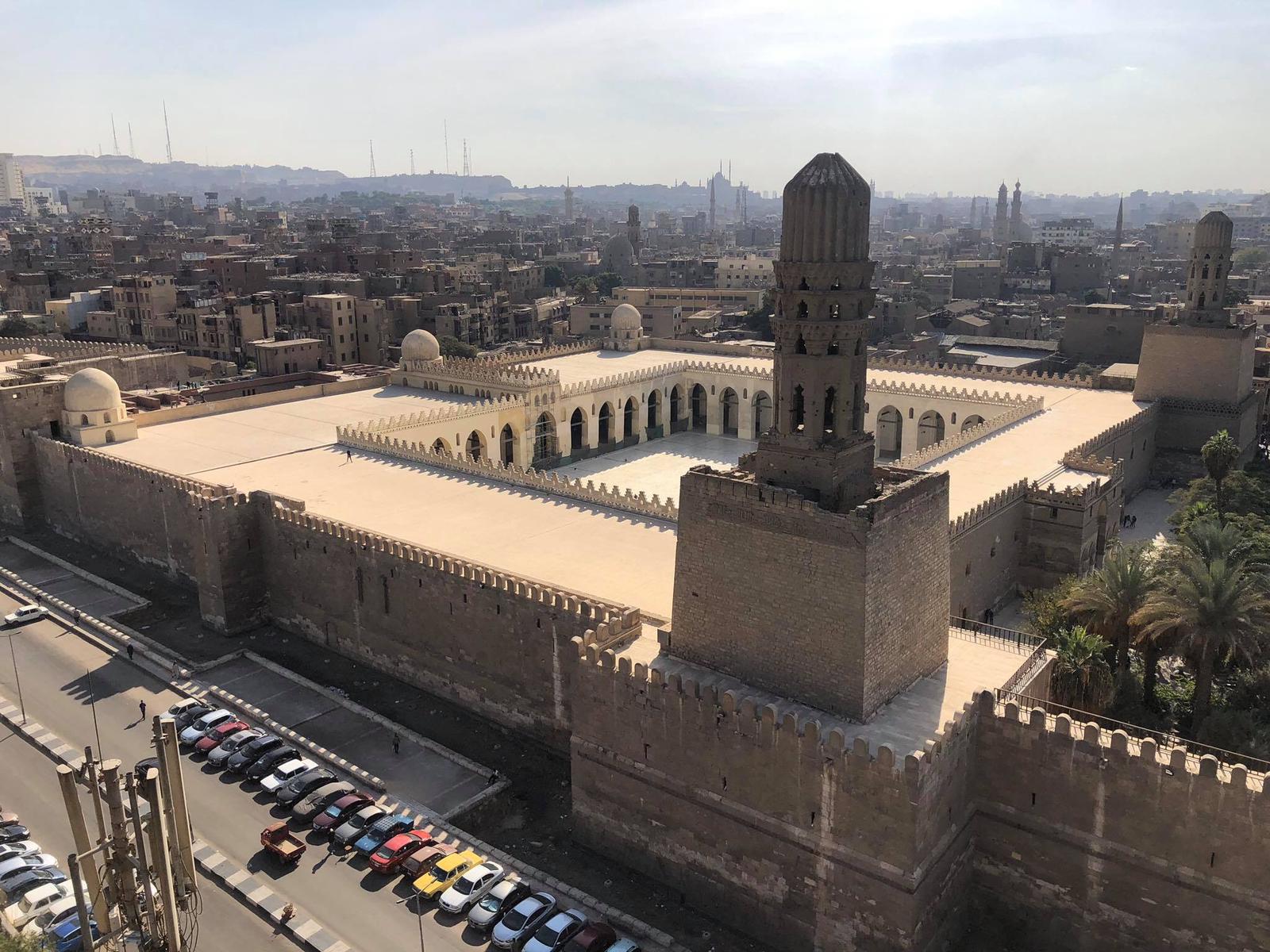

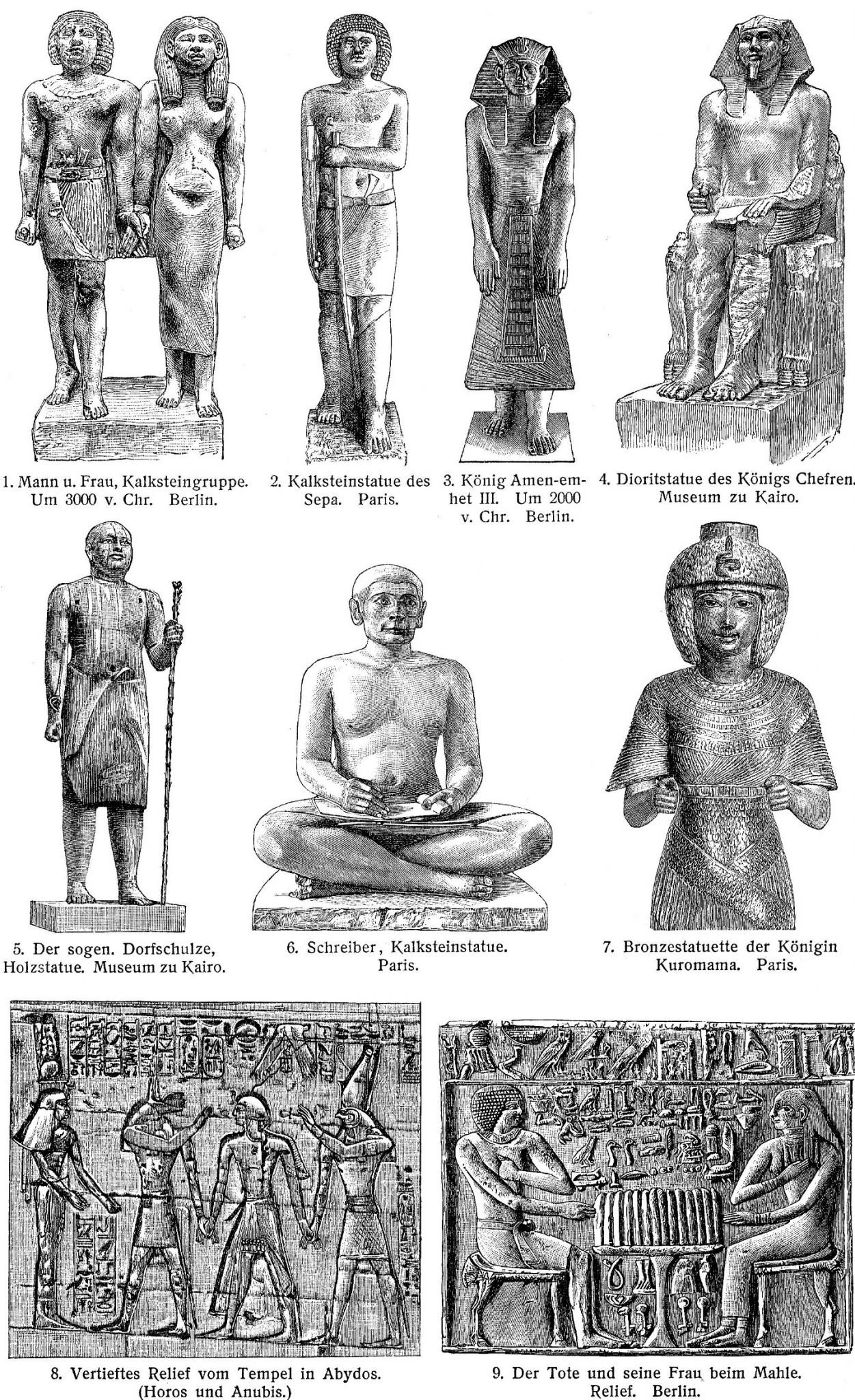
 *Mediterranean Sea
*Mediterranean Sea
 Egypt
Egypt

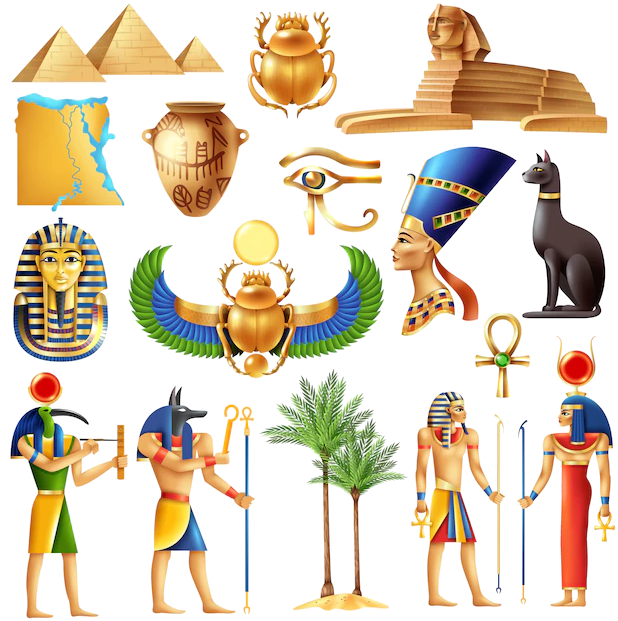 Ancient Egypt
Ancient Egypt

 History
History
 D 3000 - 2500 BC
D 3000 - 2500 BC

 History
History
 B 5000 - 4000 BC
B 5000 - 4000 BC

 History
History
 E 2500 - 2000 BC
E 2500 - 2000 BC

 History
History
 F 2000 - 1500 BC
F 2000 - 1500 BC

 History
History
 G 1500 - 1000 BC
G 1500 - 1000 BC

 History
History
 H 1000 - 500 BC
H 1000 - 500 BC

 History
History
 I 500 - 0 BC
I 500 - 0 BC

 History
History
 J 0 - 500 AD
J 0 - 500 AD

 World Heritage
World Heritage

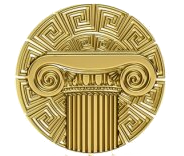 Civilization
Civilization
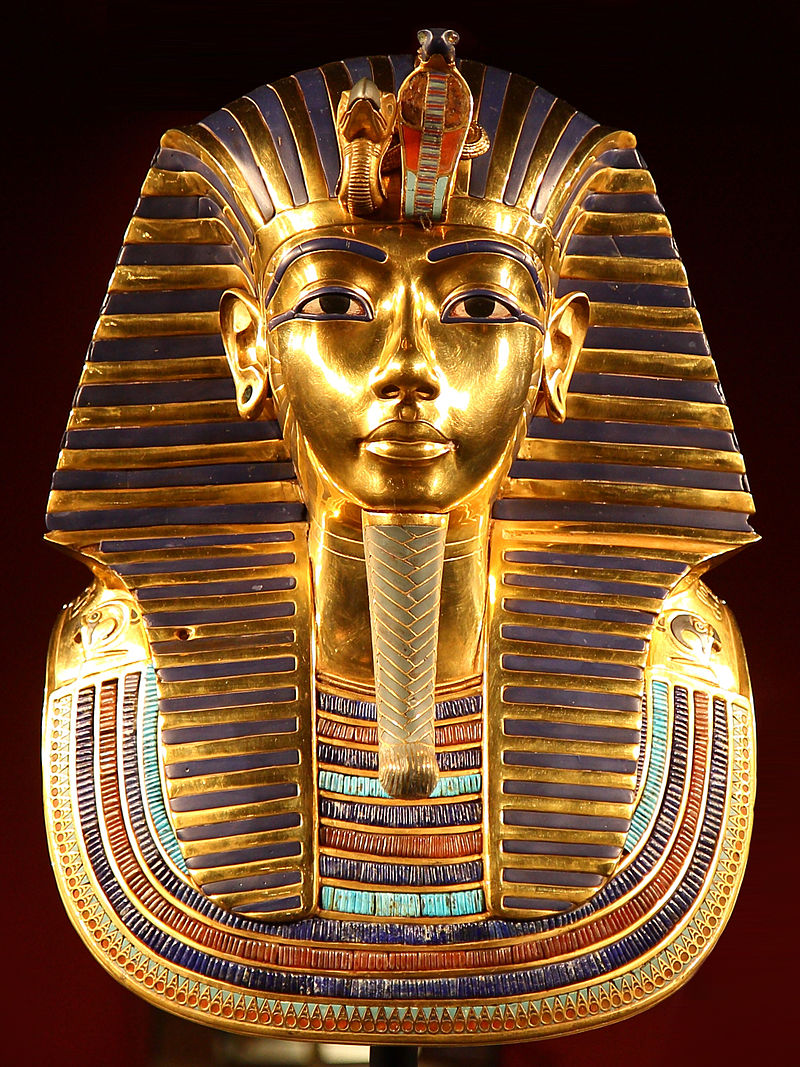
古埃及(阿拉伯语:مصر القديمة)是位于非洲东北部尼罗河中下游地区的一段时间跨度近3000年的古代文明,开始于公元前32世纪左右时美尼斯统一上下埃及建立第一王朝,终止于公元前343年波斯再次征服埃及,虽然之后古埃及文化还有少量延续,但到公元以后的时代,古埃及已经彻底被异族文明所取代,在连象形文字也被人们遗忘后,古代史前社会留给后人的是宏伟的建筑与无数谜团,1798年,拿破仑远征埃及,发现罗塞塔石碑,1822年法国学者商博良解读象形文字成功,埃及学才诞生,古埃及文明才重见天日。直到今日都还不断被挖掘出来。
古埃及的居民是由北非的土著居民和来自西亚的游牧民族塞姆人融合形成的多文化圈。约公元前6000年,因为地球轨道的运转规律性变化、间冰期的高峰过去等客观气候因素,北非茂密的草原开始退缩,人们放弃游牧而开始寻求固定的水源以耕作,即尼罗河河谷一带,公元前4千年后半期,此地逐渐形成国家,至公元前343年为止,共经历前王朝、早王朝、古王国、第一中间期、中王国、第二中间期、新王国、第三中间期、后王朝9个时期31个王朝的统治(参见“古埃及历史”一节)。其中古埃及在十八王朝时(公元前15世纪)达到鼎盛,南部尼罗河河谷地带的上埃及的领域由现在的苏丹到埃塞俄比亚,而北部三角洲地区的下埃及除了现在的埃及和部分利比亚以外,其东部边界越过西奈半岛直达迦南平原。[1]
在社会制度方面,古埃及有自己的文字系统,完善的行政体系和多神信仰的宗教系统,其统治者称为法老,因此古埃及又称为法老时代或法老埃及[2]。古埃及的国土紧密分布在尼罗河周围的狭长地带,是典型的水力帝国[来源请求]。古埃及跟很多文明一样,具有保存遗体的丧葬习俗,透过这些木乃伊的研究能一窥当时人们的日常生活,对古埃及的研究在学术界已经形成一门专门的学科,称为“埃及学”。
古埃及文明的产生和发展同尼罗河密不可分,如古希腊历史学家希罗多德所言:“埃及是尼罗河的赠礼。”古埃及时,尼罗河几乎每年都泛滥,淹没农田,但同时也使被淹没的土地成为肥沃的耕地。尼罗河还为古埃及人提供交通的便利,使人们比较容易的来往于河畔的各个城市之间。古埃及文明之所以可以绵延数千年而不间断,另一个重要的原因是其相对与外部世界隔绝的地理环境,古埃及北面和东面分别是地中海和红海,而西面则是沙漠,南面是一系列大瀑布,只有东北部有一个通道通过西奈半岛通往西亚。这样的地理位置,使外族不容易进入埃及,从而保证古埃及文明的稳定延续。相比较起来,周围相对开放的同时代的两河流域文明则经常被不同民族所主宰,两者对后世所带来的价值观也完全不同。Altes Ägypten ist die allgemeine Bezeichnung für das Land Ägypten im Altertum. Der ägyptische Name lautete Kemet und bedeutet „schwarzes Land“. Kemet bezeichnet das Delta des Nils und geht auf den schwarzen Schlamm zurück, der nach der jährlichen Nilschwemme zurückblieb und eine fruchtbare Ernte garantierte. Eine andere Bezeichnung für das Land des Altertums war Ta meri (T3 mrj), was mit „geliebtes Land“ übersetzt wird.[1]
エジプトは不毛の砂漠地帯であるが、毎年春のナイル川の増水で水に覆われる地域には河土が運ばれて堆積し、農耕や灌漑が可能になる。この氾濫原だけが居住に適しており、主な活動はナイル河畔で行われた。ナイル川の恩恵を受ける地域はケメト(黒い大地)と呼ばれ、ケメトはエジプトそのものを指す言葉として周囲に広がるデシェレト(赤い大地、ナイル川の恩恵を受けない荒地)と対比される概念だった。このケメトの範囲の幅は非常に狭く、ナイル川の本流・支流から数kmの範囲にとどまっていた。しかしながら川の周囲にのみ人が集住しているということは交通においては非常に便利であり、川船を使って国内のどの地域にも素早い移動が可能であった。この利便性は、ナイル河畔に住む人々の交流を盛んにし、統一国家を建国し維持する基盤となった。
ナイル川本流からナイル川の上流は谷合でありナイル川1本だけが流れ、下流はデルタ地帯(ナイル川デルタ)が広がっている。最初に上流地域(上エジプト)と下流地域(下エジプト)[1]でそれぞれ違った文化が発展した後に統一されたため、ファラオ(王)の称号の中に「上下エジプト王」という部分が残り、古代エジプト人も自国のことを「二つの国」と呼んでいた。
毎年のナイル川の氾濫を正確に予測する必要から天文観測が行われ、太陽暦が作られた。太陽とシリウス星が同時に昇る頃、ナイル川は氾濫したという。また、氾濫が収まった後に農地を元通り配分するため、測量術、幾何学、天文学が発達した。ヒエログリフから派生したワディ・エル・ホル文字と原シナイ文字(原カナン文字)は世界の殆どのアルファベットの起源となったされる。
エジプト文明と並ぶ最初期における農耕文明の一つであるメソポタミア文明が、民族移動の交差点にあたり終始異民族の侵入を被り支配民族が代わったのと比べ、地理的に孤立した位置にあったエジプトは比較的安定しており、部族社会が城壁を廻らせて成立する都市国家の痕跡は今の所発見されていない。
Ancient Egypt was a civilization of ancient North Africa, concentrated along the lower reaches of the Nile River in the place that is now the country Egypt. Ancient Egyptian civilization followed prehistoric Egypt and coalesced around 3100 BC (according to conventional Egyptian chronology)[1] with the political unification of Upper and Lower Egypt under Menes (often identified with Narmer).[2] The history of ancient Egypt occurred as a series of stable kingdoms, separated by periods of relative instability known as Intermediate Periods: the Old Kingdom of the Early Bronze Age, the Middle Kingdom of the Middle Bronze Age and the New Kingdom of the Late Bronze Age.
Egypt reached the pinnacle of its power in the New Kingdom, ruling much of Nubia and a sizable portion of the Near East, after which it entered a period of slow decline. During the course of its history Egypt was invaded or conquered by a number of foreign powers, including the Hyksos, the Libyans, the Nubians, the Assyrians, the Achaemenid Persians, and the Macedonians under the command of Alexander the Great. The Greek Ptolemaic Kingdom, formed in the aftermath of Alexander's death, ruled Egypt until 30 BC, when, under Cleopatra, it fell to the Roman Empire and became a Roman province.[3]
The success of ancient Egyptian civilization came partly from its ability to adapt to the conditions of the Nile River valley for agriculture. The predictable flooding and controlled irrigation of the fertile valley produced surplus crops, which supported a more dense population, and social development and culture. With resources to spare, the administration sponsored mineral exploitation of the valley and surrounding desert regions, the early development of an independent writing system, the organization of collective construction and agricultural projects, trade with surrounding regions, and a military intended to assert Egyptian dominance. Motivating and organizing these activities was a bureaucracy of elite scribes, religious leaders, and administrators under the control of a pharaoh, who ensured the cooperation and unity of the Egyptian people in the context of an elaborate system of religious beliefs.[4][5]
The many achievements of the ancient Egyptians include the quarrying, surveying and construction techniques that supported the building of monumental pyramids, temples, and obelisks; a system of mathematics, a practical and effective system of medicine, irrigation systems and agricultural production techniques, the first known planked boats,[6] Egyptian faience and glass technology, new forms of literature, and the earliest known peace treaty, made with the Hittites.[7] Ancient Egypt has left a lasting legacy. Its art and architecture were widely copied, and its antiquities carried off to far corners of the world. Its monumental ruins have inspired the imaginations of travelers and writers for centuries. A new-found respect for antiquities and excavations in the early modern period by Europeans and Egyptians led to the scientific investigation of Egyptian civilization and a greater appreciation of its cultural legacy.[8]
L'Égypte antique est une ancienne civilisation du nord-est de l'Afrique, concentrée le long du cours inférieur du Nil, dans ce qui constitue aujourd'hui l'Égypte.
La civilisation de l'Égypte antique prend forme autour de -31501 avec l'unification politique de la Haute-Égypte au sud et de la Basse-Égypte au nord sous le règne du premier roi et se développe sur plus de trois millénaires2. Son histoire est parsemée d'une série de périodes stables politiquement, entrecoupées de plusieurs périodes intermédiaires, plus troublées. L'Égypte antique atteint son apogée sous le Nouvel Empire puis entre dans une période de lent déclin. Le pays subit les assauts répétés de puissances étrangères dans cette période tardive et le règne des pharaons prend officiellement fin en -30 où l'Empire romain conquiert l'Égypte pour en faire une province3.
Le succès de la civilisation égyptienne antique découle en partie de sa capacité à s'adapter aux conditions de la vallée du Nil. L'inondation prévisible du fleuve et le contrôle de l'irrigation de la vallée produit des récoltes excédentaires qui alimentent le développement social et culturel du pays. Ce surplus agricole donne à l'administration les moyens de financer l'exploitation minière de la vallée et des régions voisines du désert. Le développement rapide d'un système d'écriture indépendant, l'organisation de constructions collectives et de projets agricoles, les relations commerciales avec les pays voisins et une armée solide permettent à l'Égypte d'affirmer sa domination sur la région. Toutes ces activités sont organisées par une bureaucratie de scribes, de dirigeants religieux et d'administrateurs sous le contrôle du pharaon qui assure l'unité du peuple égyptien dans le cadre d'un système complexe de croyances religieuses4,5.
Les nombreuses réalisations des Égyptiens de l'Antiquité comprennent l'extraction minière, l'arpentage et les techniques de construction qui facilitent la construction de pyramides monumentales, de temples et d'obélisques. On compte également à leur crédit le développement des mathématiques, de la médecine, de l'irrigation et de la production agricole, la construction des premiers navires connus, la faïence égyptienne, de nouvelles formes de littérature6. Du rassemblement des tribus primitives qui créent le premier royaume pharaonique jusqu'à son absorption au Ier siècle av. J.-C., l'Égypte antique est le théâtre d'évènements majeurs qui influencent assurément la culture et l'imaginaire des peuples lui ayant succédé. Son art et son architecture sont largement copiés et ses antiquités sont disséminées aux quatre coins du monde. Un regain d'intérêt pour la période antique au début de l'époque moderne conduit à de nombreuses investigations scientifiques de la civilisation égyptienne, notamment par des fouilles, et à une meilleure appréciation de son héritage culturel, pour l'Égypte et le monde7.
Con Antico Egitto si intende la civiltà sviluppatasi lungo la Valle del Nilo a partire dalle cateratte, a sud e al confine con l’attuale Sudan[N 1], alla foce, al delta, nel Mar Mediterraneo, per un’estensione complessiva di circa 1000 km. Benché il territorio fosse molto più vasto, comprendendo gran parte anche del Deserto Libico-Nubiano, gli insediamenti umani, fin dai tempi più remoti, si svilupparono solo nella stretta fascia verdeggiante a ridosso delle rive del fiume larga, in alcuni punti anche solo poche centinaia di metri.
Fin dal 3500 a.C., di pari passo con l'avvento dell'agricoltura, in particolare la coltivazione del grano, dell’orzo e del lino, si ha contezza di insediamenti umani specie lungo le rive del Nilo[1]. Le piene annuali del fiume, infatti, favorivano la coltivazione anche con più raccolti annui grazie ai sedimenti, particolarmente fertili (Limo), che il fiume, nel suo ritirarsi, lasciava sul terreno. Ciò comportò, fin dai tempi più remoti, conseguentemente, la necessità di controllare, incanalare e conservare le acque onde garantire il costante approvvigionamento, vuoi per il sostentamento umano, vuoi per quello del bestiame e delle piantagioni.
Non è da escludersi che proprio la complessa necessità di dover far fronte alle esigenze connesse con la gestione dell’agricoltura, e segnatamente, delle acque nilotiche, abbia favorito proprio il formarsi delle prime comunità su territori parziali tuttavia ben differenziati e politicamente e geograficamente individuabili. Tali entità, normalmente individuate con il termine greco di nomoi, ben presto si costituirono in due distinte entità geo-politiche più complesse. Tale l’importanza del fiume Nilo, che attraversava tutto il paese, che anche le denominazioni di tali due macro-aree fanno riferimento al fiume: considerando che le sorgenti del Nilo, benché all'epoca non note, dovevano essere a sud, tale sarà l’Alto Egitto, mentre, di converso, l’area del delta, verso il Mediterraneo, sarà indicato come Basso Egitto[2].
Varie culture si susseguirono nella valle nilotica fin dal 3900 a.C. in quello che viene definito Periodo Predinastico. Un’entità embrionale di Stato può riconoscersi, invece, a partire dal 3200-3100 a.C. con la I dinastia e l’unificazione delle due macro-aree che resteranno, tuttavia, sempre distinte tanto che per tutta la storia del Paese i regnanti annovereranno tra i loro titoli quello di Signore delle Due Terre.
La storia dell’Antico Egitto copre, complessivamente, circa 4000 anni, dal 3900 a.C. (con il Periodo Predinastico) al 342 a.C. (con il Periodo tardo) e comprende, dal 3200 a.C., trenta dinastie regnanti riconosciute archeo-storicamente. A queste debbono esserne aggiunte altre, dette di comodo, giacché riferite, di fatto, non a governi autoctoni, o comunque derivanti dal Paese, bensì frutto di invasioni o di raggiungimento del potere da parte di regnanti stranieri. Avremo perciò una XXXI dinastia, costituita da re persiani, una XXXII dinastia macedone, che annovera un solo sovrano, Alessandro Magno, e una XXXIII dinastia, meglio nota come Dinastia tolemaica, nata dallo smembramento dell’impero di Alessandro.
Anche molti imperatori romani, occupato l’Egitto, non disdegnarono di assumere il titolo di faraone con titolatura geroglifica.
El Antiguo Egipto fue una civilización que se originó a lo largo del cauce medio y bajo del río Nilo, y que alcanza tres épocas de esplendor faraónico en los periodos denominados Imperio Antiguo, Imperio Medio, e Imperio Nuevo. Alcanzaba desde el delta del Nilo en el norte, hasta Elefantina, en la primera catarata del Nilo, en el sur, llegando a tener influencia desde el Éufrates hasta Jebel Barkal, en la cuarta catarata del Nilo, en épocas de máxima expansión. Su territorio también abarcó, en distintos periodos, el desierto oriental y la línea costera del mar Rojo, la península del Sinaí, y un gran territorio occidental dominando los dispersos oasis. Históricamente, fue dividido en Alto y Bajo Egipto, al sur y al norte respectivamente.
La civilización egipcia se desarrolló durante más de 3000 años. Comenzó con la unificación de algunas ciudades del valle del Nilo,1 alrededor del año 3150 a. C.,2 y convencionalmente se da por terminado en el año 31 a. C., cuando el Imperio romano conquistó y absorbió el Egipto ptolemaico, que desaparece como Estado.3 Este acontecimiento no representó el primer período de dominación extranjera, pero fue el que condujo a una transformación gradual en la vida política y religiosa del valle del Nilo, marcando el final del desarrollo independiente de su cultura. Su identidad cultural había comenzado a diluirse paulatinamente tras las conquistas de los reyes de Babilonia (siglo VI a. C.) y Macedonia (siglo IV a. C.), desapareciendo su religión con la llegada del cristianismo, en la época de Justiniano I, cuando en 535 fue prohibido el culto a la diosa Isis, en el templo de File.
Egipto tiene una combinación única de características geográficas, situada en el África nororiental y confinada por Libia, Sudán, el mar Rojo y el mar Mediterráneo. El río Nilo fue la clave para el éxito de la civilización egipcia, ya que éste permitía el aprovechamiento de los recursos y ofrecía una significativa ventaja sobre otros oponentes: el légamo fértil depositado a lo largo de los bancos del Nilo tras las inundaciones anuales significó para los egipcios el practicar una forma de agricultura menos laboriosa que en otras zonas, liberando a la población para dedicar más tiempo y recursos al desarrollo cultural, tecnológico y artístico.
La vida se ordenaba en torno al desarrollo de un sistema de escritura y de una literatura independientes, así como en un cuidadoso control estatal sobre los recursos naturales y humanos, caracterizado sobre todo por la irrigación de la fértil cuenca del Nilo y la explotación minera del valle y de las regiones desérticas circundantes, la organización de proyectos colectivos como las grandes obras públicas, el comercio con las regiones vecinas de África del este y central y con las del Mediterráneo oriental y, finalmente, por un poderío militar capaz de derrotar a cualquier enemigo, y que mantuvieron una hegemonía imperial y la dominación territorial de civilizaciones vecinas en diversos períodos. La motivación y la organización de estas actividades estaba encomendada a una burocracia de élite sociopolítica y económica, los escribas, bajo el control del Faraón, un personaje semidivino, perteneciente a una sucesión de dinastías, que garantizaba la cooperación y la unidad del pueblo egipcio en el contexto de un elaborado sistema de creencias religiosas.45
Los muchos logros de los egipcios incluyen la extracción minera, la topografía y las técnicas de construcción que facilitaron el levantamiento de monumentales pirámides, templos y obeliscos, unos procedimientos matemáticos, una práctica médica eficaz, métodos de riego y técnicas de producción agrícola, las primeras naves conocidas,6 la tecnología del vidrio y de la fayenza, las nuevas formas de la literatura y el tratado de paz más antiguo conocido, firmado con los hititas.7 Egipto dejó un legado duradero, su arte y arquitectura fueron ampliamente copiados, y sus antigüedades se llevaron a los rincones más lejanos del mundo. Sus ruinas monumentales han inspirado la imaginación de los viajeros y escritores desde hace siglos. Un nuevo respeto por las antigüedades y excavaciones en la época moderna han llevado a la investigación científica de la civilización egipcia y a una mayor apreciación de su legado cultural.8
Древний Еги́пет (от др.-греч. Αἴγυπτος и лат. Aegyptus), самоназвание Та-кемет, Та-мери, Та-уи и др. (транслит. егип. tA-kmt, tA-mrj, tA-wy), Ке́ми (копт. Ⲭⲏⲙⲓ) — название исторического региона и культуры значительной цивилизации Древнего мира, существовавшей на северо-востоке Африки вдоль нижнего течения реки Нил. История Древнего Египта составляет около 40 веков и подразделяется исследователями на додинастический период (относится к финалу доисторического периода, краткий обзор которого также приводится в статье), династический период (основной этап существования египетской цивилизации протяжённостью около 27 веков), эллинистический период (синтез с греко-македонской культурой под властью династии Птолемеев), римский период (в составе древнеримского государства, как одна из важнейших провинций Римской империи). Временные границы существования древнеегипетской культуры, принятые исследователями, охватывают период с середины IV тысячелетия до н. э. до IV век н. э. Византийско-коптский период (в составе Византии) хотя и относится уже к раннему средневековью, при этом также иногда рассматривается в рамках изучения Древнего Египта. Временные границы начинаются с IV века и заканчиваются арабским завоеванием в VII веке.
Возвышение древнеегипетской цивилизации в большой степени было результатом её способности адаптироваться к условиям речной долины и дельты Нила. Регулярные ежегодные разливы, удобряющие почву плодородным илом, а также организация ирригационной системы земледелия позволяли производить зерновые культуры в избыточном количестве, обеспечивавшем социальное и культурное развитие. Концентрация людских и материальных ресурсов в руках администрации способствовала созданию и поддержанию сложной сети каналов, появлению регулярной армии и расширению торговли, а с постепенным развитием горнодобывающего дела, полевой геодезии и строительных технологий давала возможность организовывать коллективные возведения монументальных сооружений. Принуждающей и организующей силой в Древнем Египте был хорошо развитый государственный аппарат, состоявший из жрецов, писцов и администраторов во главе с фараоном, который часто обожествлялся в сложной системе религиозных верований с развитым культом погребальных обрядов.
Древний Египет оставил огромное культурное наследие для мировой цивилизации, произведения его искусства ещё в древности вывозились в различные уголки мира и широко копировались мастерами других стран. Своеобразные архитектурные формы — величественные пирамиды, храмы, дворцы и обелиски вдохновляли воображение путешественников и исследователей в течение многих столетий. Египетскими мастерами создавались прекрасные настенные росписи и статуи, были освоены способы производства стекла и фаянса, поэтами и писателями созданы новые формы в литературе. В числе научных достижений древних египтян было создание оригинальной системы письма, математика, практическая медицина, астрономические наблюдения и возникший на их основе календарь. Интерес к памятникам, артефактам и археологическим раскопкам в Древнем Египте, возникший на рубеже XVIII—XIX веков, привёл к созданию науки египтологии и возникновению направлений искусства (египтомания, египтизирующий стиль).


 Egypt
Egypt
 Algeria
Algeria
 Arab League
Arab League
 Arab League
Arab League
 Abdel Rahman Azzam
Abdel Rahman Azzam
 Arab League
Arab League
 Abdul Khalek Hassouna
Abdul Khalek Hassouna
 Arab League
Arab League
 Ahmed Aboul Gheit
Ahmed Aboul Gheit
 Arab League
Arab League
 Ahmed Asmat Abdel-Meguid
Ahmed Asmat Abdel-Meguid
 Arab League
Arab League
 Amr Moussa
Amr Moussa
 Arab League
Arab League
 Chedli Klibi
Chedli Klibi
 Arab League
Arab League
 Mahmoud Riad
Mahmoud Riad
 Arab League
Arab League
 Nabil Elaraby
Nabil Elaraby
 Arab League
Arab League
 Nabil Elaraby
Nabil Elaraby
 Bahrain
Bahrain
 Djibouti
Djibouti

 Hand in Hand
Hand in Hand
 Iraq
Iraq
 Yemen
Yemen
 Jordan
Jordan
 Katar
Katar
 Comoros
Comoros
 Kuwait
Kuwait
 Libanon
Libanon
 Libya
Libya
 Morocco
Morocco
 Mauritania
Mauritania
 Oman
Oman
 Palestine
Palestine
 Republic of the Sudan
Republic of the Sudan
 Saudi Arabia
Saudi Arabia
 Somalia
Somalia
 Syria
Syria
 Tunisia
Tunisia
 United Arab Emirates
United Arab Emirates

 Important International Organizations
Important International Organizations



阿拉伯埃及共和国(阿拉伯语:جمهوريّة مصرالعربيّة,![]() 发音 帮助·信息),通称埃及,是东北非洲人口最多的国家,面积为1,001,450平方千米,2020年2月人口突破1亿[3]。原存在于当地的古埃及是世界文明古国之一,与两河流域文明有一定程度的交流,不过在希腊与罗马人的统治下,古埃及文明在公元前逐渐没落,后来被阿拉伯文化所取代。二战后,埃及于1953年由阿拉伯人建立共和国,地理上该国地跨二洲即亚洲和非洲,西奈半岛位于西南亚(西亚),而该国大部分国土位于北非地区。伊斯兰教为国教。埃及人大部分信仰伊斯兰教逊尼派,最大的宗教少数派为科普特正教。另外还有基督教其他教派和伊斯兰教什叶派;官方语言为阿拉伯语,通用英语和法语。埃及经济的多元化程度在中东地区名列前茅。
发音 帮助·信息),通称埃及,是东北非洲人口最多的国家,面积为1,001,450平方千米,2020年2月人口突破1亿[3]。原存在于当地的古埃及是世界文明古国之一,与两河流域文明有一定程度的交流,不过在希腊与罗马人的统治下,古埃及文明在公元前逐渐没落,后来被阿拉伯文化所取代。二战后,埃及于1953年由阿拉伯人建立共和国,地理上该国地跨二洲即亚洲和非洲,西奈半岛位于西南亚(西亚),而该国大部分国土位于北非地区。伊斯兰教为国教。埃及人大部分信仰伊斯兰教逊尼派,最大的宗教少数派为科普特正教。另外还有基督教其他教派和伊斯兰教什叶派;官方语言为阿拉伯语,通用英语和法语。埃及经济的多元化程度在中东地区名列前茅。
埃及也被认为是一个中等强国,各项重要产业如旅游业、农业、工业和服务业有着几乎同等的发展比重,埃及的苏伊士运河是亚洲与欧洲的桥梁。在地中海、中东和伊斯兰信仰地区尤其有广泛的影响力。
2015年埃及经济发展会议(EEDC),埃及计划于2019年底正式迁往新首都,缓解开罗人口压力。后该搬迁计划被推迟至2021年7月。
Ägypten (Aussprache [ɛˈɡʏptn̩] oder [ɛˈɡɪptn̩]; arabisch مصر Miṣr, offiziell Arabische Republik Ägypten) ist ein Staat im nordöstlichen Afrika mit über 100 Millionen Einwohnern[6] und einer Fläche von über einer Million Quadratkilometern. Die Megastadt Kairo ist ägyptische Hauptstadt und die größte Metropole Afrikas und Arabiens, der Ballungsraum „Greater Cairo“ ist eine der bevölkerungsreichsten Stadtregionen der Erde. Weitere Millionenstädte des Landes sind Alexandria und Gizeh. Hinsichtlich der Wirtschaftsleistung beim BIP pro Kopf liegt Ägypten auf Platz 94 von 190 Ländern (2016, PPP).
Das Alte Ägypten gilt als eine der frühen Hochkulturen der Welt. Ägypten wird seit der arabisch-islamischen Expansion zur Maschrek-Region des arabischen Raumes gezählt. Es hat als interkontinentaler Staat eine Landbrücke vom größeren afrikanischen Teil nach Asien, zur Sinai-Halbinsel. Durch die Revolution von 2011 änderten sich die gesellschaftlichen und politischen Verhältnisse im Land.
エジプト・アラブ共和国(エジプト・アラブきょうわこく、アラビア語: جمهورية مصر العربية)、通称:エジプト(アラビア語: مِصر)は、中東および北アフリカに位置する共和制国家。首都はカイロ。
アフリカ大陸では北東端に位置し、西にリビア、南にスーダン、北東のシナイ半島ではイスラエル、パレスチナ国・ガザ地区と国境を接する。北部は地中海、東部は紅海に面している。
エジプトは中東と北東アフリカの接点に存在し、古代文明が存在していた地域のひとつに数え上げられる。その歴史は紀元前の時代にまで遡るほど古い。
人口はアラブ諸国で最も多く、2020年2月に1億人を超えている[2]。同国地域には数千年前の古代都市の痕跡や幾多もの史跡がナイル川に沿う形で点在している。
また、水源が乏しい国の一つとしても知られており、南北に流れるナイル川の河谷とデルタ地帯(ナイル・デルタ)のほかは、国土の大部分の95%以上が砂漠である[3]。ナイル河口の東には地中海と紅海を結ぶスエズ運河がある。
同国は現在、MENA地域において2番目に人口密度の高い国と見做されており、中でもカイロは世界で最も人口密度の高い都市のひとつに当たる。
Egypt (/ˈiːdʒɪpt/ (![]() listen) EE-jipt; Arabic: مِصر, romanized: Miṣr), officially the Arab Republic of Egypt, is a transcontinental country spanning the northeast corner of Africa and southwest corner of Asia by a land bridge formed by the Sinai Peninsula. Egypt is a Mediterranean country bordered by the Gaza Strip (Palestine) and Israel to the northeast, the Gulf of Aqaba and the Red Sea to the east, Sudan to the south, and Libya to the west. Across the Gulf of Aqaba lies Jordan, across the Red Sea lies Saudi Arabia, and across the Mediterranean lie Greece, Turkey and Cyprus, although none share a land border with Egypt.
listen) EE-jipt; Arabic: مِصر, romanized: Miṣr), officially the Arab Republic of Egypt, is a transcontinental country spanning the northeast corner of Africa and southwest corner of Asia by a land bridge formed by the Sinai Peninsula. Egypt is a Mediterranean country bordered by the Gaza Strip (Palestine) and Israel to the northeast, the Gulf of Aqaba and the Red Sea to the east, Sudan to the south, and Libya to the west. Across the Gulf of Aqaba lies Jordan, across the Red Sea lies Saudi Arabia, and across the Mediterranean lie Greece, Turkey and Cyprus, although none share a land border with Egypt.
Egypt has one of the longest histories of any country, tracing its heritage along the Nile Delta back to the 6th–4th millennia BCE. Considered a cradle of civilisation, Ancient Egypt saw some of the earliest developments of writing, agriculture, urbanisation, organised religion and central government.[14] Iconic monuments such as the Giza Necropolis and its Great Sphinx, as well the ruins of Memphis, Thebes, Karnak, and the Valley of the Kings, reflect this legacy and remain a significant focus of scientific and popular interest. Egypt's long and rich cultural heritage is an integral part of its national identity, which reflects its unique transcontinental location being all Mediterranean, Middle Eastern and North African.[15] Egypt was an early and important centre of Christianity, but was largely Islamised in the seventh century and remains a predominantly Muslim country, albeit with a significant Christian minority.
Modern Egypt dates back to 1922, when it gained independence from the British Empire as a monarchy. Following the 1952 revolution, Egypt declared itself a republic, and in 1958 it merged with Syria to form the United Arab Republic, which dissolved in 1961. Throughout the second half of the 20th century, Egypt endured social and religious strife and political instability, fighting several armed conflicts with Israel in 1948, 1956, 1967 and 1973, and occupying the Gaza Strip intermittently until 1967. In 1978, Egypt signed the Camp David Accords, officially withdrawing from the Gaza Strip and recognising Israel. The country continues to face challenges, from political unrest, including the recent 2011 revolution and its aftermath, to terrorism and economic underdevelopment. Egypt's current government, a semi-presidential republic has been described by a number of watchdogs as authoritarian or heading an authoritarian regime, responsible for perpetuating the country's problematic human rights record.
Islam is the official religion of Egypt and Arabic is its official language.[16] With over 100 million inhabitants, Egypt is the most populous country in North Africa, the Middle East, and the Arab world, the third-most populous in Africa (after Nigeria and Ethiopia), and the thirteenth-most populous in the world. The great majority of its people live near the banks of the Nile River, an area of about 40,000 square kilometres (15,000 sq mi), where the only arable land is found. The large regions of the Sahara desert, which constitute most of Egypt's territory, are sparsely inhabited. About half of Egypt's residents live in urban areas, with most spread across the densely populated centres of greater Cairo, Alexandria and other major cities in the Nile Delta.
Egypt is a developing country, ranking 116th on the Human Development Index. Politically, however, it is considered to be a regional power in North Africa, the Middle East and the Muslim world, and a middle power worldwide.[17] Egypt has a diversified economy, which is the second-largest in Africa, the 33rd-largest economy by nominal GDP, and the 20th-largest globally by PPP. Egypt is a founding member of the United Nations, the Non-Aligned Movement, the Arab League, the African Union, Organisation of Islamic Cooperation and the World Youth Forum.
L'Égypte Écouter (en arabe : مصر / miṣr ; en arabe égyptien : مصر / maṣr masˤɾ), en forme longue la république arabe d'Égypte (en arabe : جمهورية مصر العربية) / jumhuriyat misr al arabiya2, est un pays se trouvant en Afrique du Nord-Est et, pour la péninsule du Sinaï, en Asie de l'Ouest. Située sur la côte sud de la Méditerranée orientale, le bassin Levantin, l'actuelle Égypte occupe l'espace géographique qui fut autrefois celui de l'Égypte antique.
Avec plus de 106 millions d'habitants en 2021, l'Égypte est le troisième pays le plus peuplé d'Afrique derrière le Nigeria et l'Éthiopie. En très forte croissance, sa population a été multipliée par quatre en soixante ans.
Sa capitale est Le Caire et sa monnaie la livre égyptienne. La langue officielle du pays est l'arabe, utilisé dans tous les documents et dans l'éducation. En revanche, la langue parlée est l'arabe égyptien (arabe dialectal). Le siwi — tamazight (berbère) de l'ouest du pays — est parlé à Siwa. Le copte n'est utilisé que comme langue liturgique des chrétiens d'Égypte. Le nubien est parlé par les habitants de Haute-Égypte, au sud d'Assouan, qui fait partie du nord de la région de Nubie.
L'Egitto (in arabo: مصر, Miṣr), ufficialmente Repubblica Araba d'Egitto (in arabo: جمهورية مصر العربية, Ǧumhūriyya Miṣr al-ʿArabiyya), è un paese transcontinentale che attraversa l'angolo nord-est dell'Africa e l'angolo sud-ovest dell'Asia attraverso un ponte di terra formato dalla penisola del Sinai. La maggior parte del suo territorio di 1 001 000 chilometri quadrati si trova nel Nord Africa e confina con il mar Mediterraneo a nord, la striscia di Gaza e Israele a nord-est, il golfo di Aqaba e il mar Rosso ad est, il Sudan a sud e la Libia ad ovest. Dal 1958 al 31 dicembre 1971 era denominato Repubblica Araba Unita.
L'Egitto è uno dei paesi più popolati dell'Africa e del Medio Oriente, e il 14º più popolato al mondo. Buona parte dei suoi più di 100 milioni di abitanti[6] vive vicino alle rive del fiume Nilo, su una superficie di circa 10 000 chilometri quadrati, dove si trova l'unica terra arabile del paese. Le grandi regioni del deserto del Sahara, che costituiscono la maggior parte del territorio dell'Egitto, sono scarsamente abitate. Circa il 42% dei residenti in Egitto vive in aree urbane, con la maggior diffusione di tutti i centri densamente popolati al Cairo, Alessandria e altre grandi città del delta del Nilo, come Mansura.
L'Egitto ha una delle più lunghe storie di ogni Stato moderno, essendo stato continuamente abitato dal X millennio a.C.[7] I suoi monumenti, come la piramide di Giza e la Grande Sfinge, sono stati costruiti per la sua antica civiltà, che è stata una delle più avanzate del suo tempo. Le sue antiche rovine, come quelle di Menfi, Tebe, Karnak e la Valle dei Re, al di fuori di Luxor, sono un focus significativo di studi archeologici e di interesse popolare. La ricca eredità culturale dell'Egitto, così come l'attrazione della sua riviera del mar Rosso, hanno fatto del turismo una parte vitale dell'economia, che impiega circa il 34% della forza lavoro del paese.
L'economia dell'Egitto è una delle più diversificate del Vicino Oriente, con settori quali il turismo, l'agricoltura, l'industria e dei servizi a livelli di produzione senza uguali. L'Egitto è considerato una media potenza,[8] con una significativa influenza culturale, politica e militare in Nord Africa, Vicino Oriente e mondo musulmano.
Egipto (en árabe, مصر, Miṣr, pronunciado en dialecto egipcio: Maṣr; en copto, Ⲭⲏⲙⲓ, khemi), oficialmente la República Árabe de Egipto (en árabe: جمهوريّة مصرالعربيّة Ŷumhūriyyat Miṣr Al-ʿArabiyyah7), es un país soberano transcontinental. Está ubicado mayoritariamente en el extremo noreste de África, mientras que en Asia se encuentra en la península del Sinaí. Limita con Sudán al sur, con Libia al oeste y con la Franja de Gaza (Palestina) e Israel al noreste. Al norte limita con el mar Mediterráneo y al sureste con el mar Rojo.
La mayor parte de su superficie la integra el desierto del Sahara. El río Nilo cruza el desierto de sur a norte, formando un estrecho valle y un gran delta en su desembocadura en el Mediterráneo. Estas tierras fértiles se hallan densamente pobladas, concentrando la mayor población nacional de África. Casi la mitad de los egipcios viven en áreas urbanas, sobre todo en los centros densamente poblados de El Cairo, su capital, y Alejandría.
Fue cuna de la antigua civilización egipcia, que junto con la mesopotámica fue el origen de la actual cultura occidental, influyendo decisivamente en la historia de la humanidad. Los restos de esta civilización jalonan el país, como las pirámides y la gran esfinge, o la ciudad meridional de Lúxor, que contiene un gran número de restos antiguos, tales como el templo de Karnak y el Valle de los Reyes. Egipto es actualmente un centro político y cultural importante del Oriente Próximo y se le considera una potencia regional. Su actual forma de gobierno es la república semipresidencialista. Entre 2013 y 2014 estuvo bajo gobierno interino, formado tras el golpe de Estado de 2013 que derrocó al primer presidente democrático del país, Mohamed Morsi.8
Еги́пет (араб. مصر Миср/Miṣr [misˤɾ], масри مصر Маср/Maṣr [ˈmɑsˤɾ], копт. Ⲭⲏⲙⲓ [kʰēmi]), официальное название — Ара́бская Респу́блика Еги́пет (араб. جمهورية مصر العربية Джумхурийят Миср аль-Арабийя, масри جمهورية مصر العربية Гумхурия Маср иль-Арабийя), — трансконтинентальное государство, расположенное в Северной Африке и на Ближнем Востоке (Синайский полуостров).
На северо-востоке граничит с Израилем и частично признанным государством Палестиной, на юге — с Суданом, на западе — с Ливией. На севере территория страны омывается водами Средиземного моря, на востоке — Красным морем, при этом оба моря соединены посредством искусственно сооружённого Суэцкого канала.
 Sport
Sport
 Financial
Financial
 Party and government
Party and government
 Economy and trade
Economy and trade
 Architecture
Architecture
 Religion
Religion
 International cities
International cities
 Important port
Important port
 Art
Art
 Geography
Geography
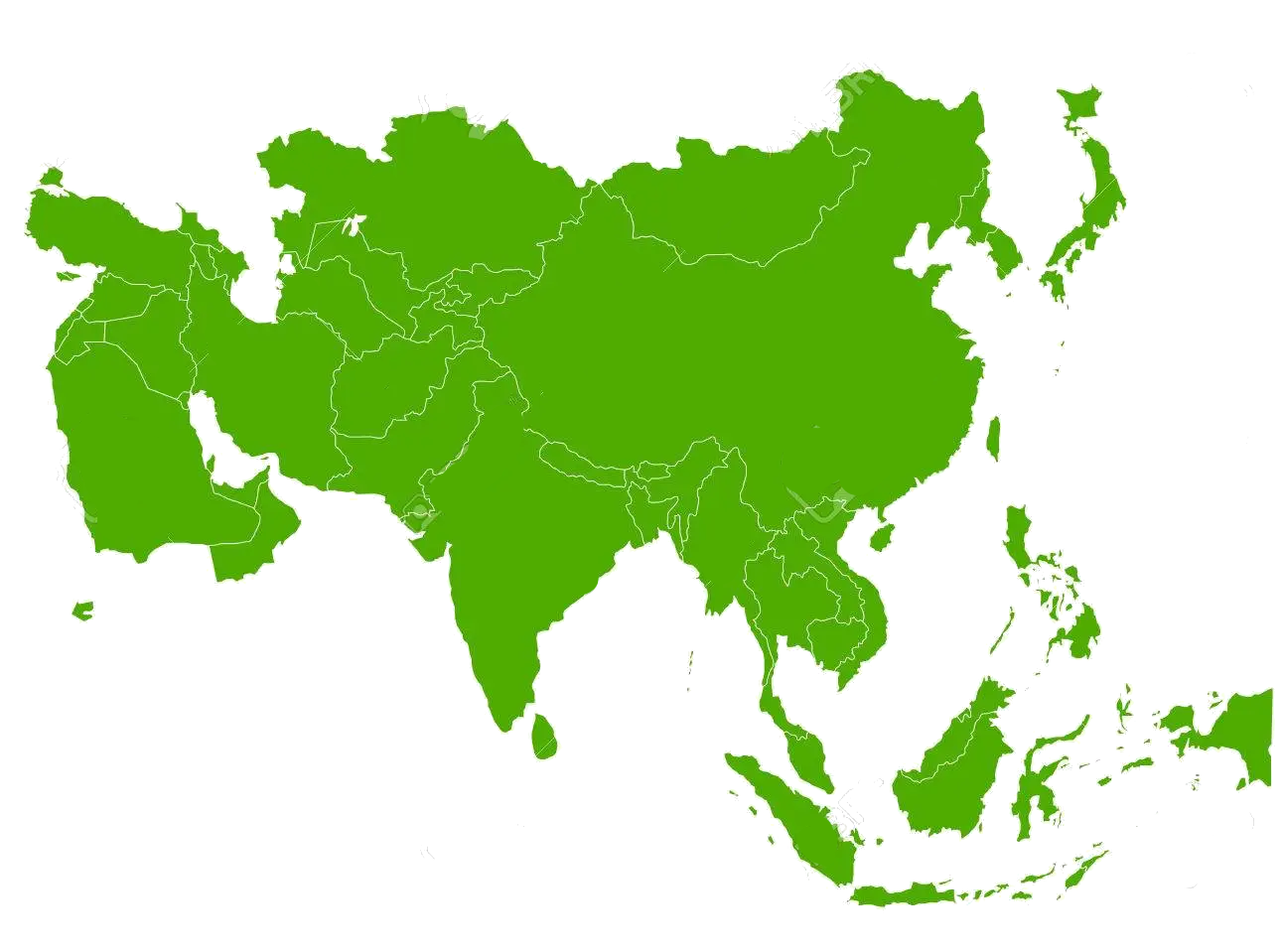 States of Asia
States of Asia